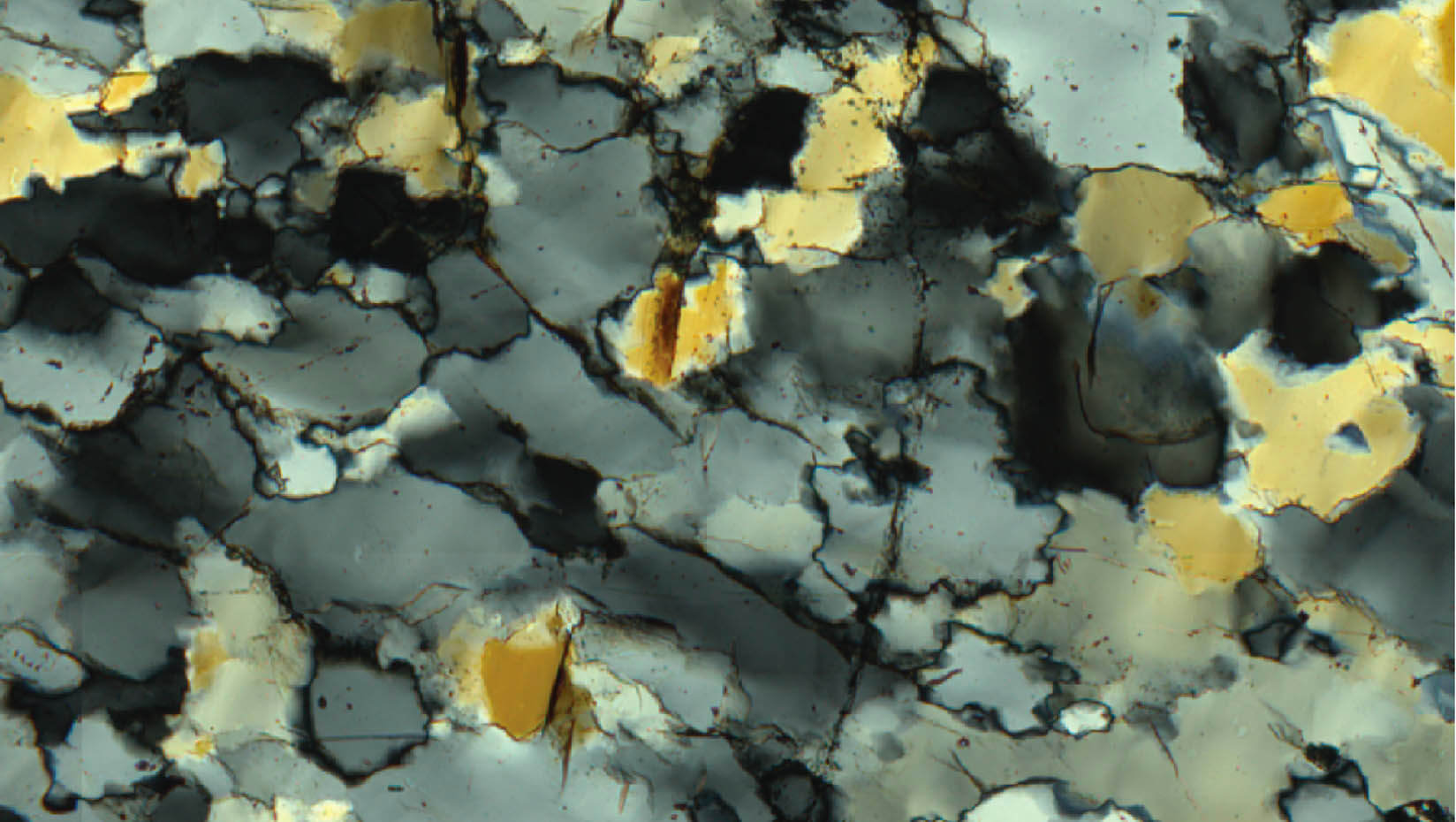
UMaine researchers developing new method to quantify stress and flow rate in deforming rocks
Creating new, more accurate methods for quantifying the stress and flow rate experienced by deforming rocks at the boundaries of moving tectonic plates is the goal of a University of Maine study funded with a $392,372 National Science Foundation grant.
Scott Johnson, a professor of structural geology, and Senthil Vel, a professor of mechanical engineering, will develop these new calculations in collaboration with a postdoctoral researcher, a Ph.D. student and up to three undergraduates from the School of Earth and Climate Sciences or Department of Mechanical Engineering. They also will work with Greg Hirth, a professor at Brown University in Rhode Island, and David Prior, a professor at Otago University in New Zealand.
The stress on rocks from tectonic plate movement causes them to flow, and this flow is what causes mountains to grow and also triggers earthquakes. More insight into these stresses and related flow leads to a better understanding of fundamental plate tectonic processes, and can inform decision making in construction, infrastructure maintenance and emergency preparedness.
A common method for relating the stress and flow rate involves mathematical equations known as flow laws. These equations are derived through laboratory deformation experiments and are associated with specific microstructural characteristics such as mineral shape and size. For example, through these experiments, it has been shown that the average size of a mineral such as quartz that recrystallizes during deformation is directly proportional to the applied stress.
While these existing flow laws are effective, they involve significant uncertainties related to estimates of average recrystallized grain size and the activation energy associated with the flow process, and there are currently no other methods available with which to compare results. UMaine researchers aim to develop a new method based on the roughness of mineral grain boundaries and explore how they can record stress and flow rates.
This new method is based on the principle that the roughness of a grain boundary reflects the competition between elastic energy stored as defects in the crystal structure and surface energy stored at the grain boundary. The rougher the grain boundary, the more surface energy is being stored. According to researchers, this roughness is proportional to both applied stress and flow rate through a fractal dimension.
“Fractal roughness is used extensively in the physical, natural and social sciences to evaluate properties as diverse as material strength, cloud formation and urban sprawl,” Johnson says. “The specific technique we are employing was proposed in the 1990s, but has not been further developed until now. Our preliminary data are exciting and we anticipate it will open up new avenues of research in material and Earth science that will benefit scientists, engineers and the general public.”
The research has two main components focussing on laboratory deformation experiments and field-based measurements. The laboratory experiments involve the deformation of polycrystalline quartz samples under tightly controlled conditions of temperature, applied stress and resulting flow rate. The fractal dimension values measured in these deformed samples will be used to calibrate researchers’ new method. Simultaneously, fractal dimension values will be determined in deformed polycrystalline quartz aggregates from the Sandhill Corner shear zone, located in Somerville, Maine. The shear zone is part of the Norumbega fault system, which lies along the southern half of Maine and spans from its western border to the western edge of New Brunswick, Canada.
As part of this work, new protocols are being developed for automated measurement of grain perimeters using electron backscatter diffraction techniques using the scanning electron microscope in the School of Earth and Climate Sciences.
Applying their new, experimentally calibrated method to the Sandhill Corner rocks will allow researchers to compare results with those from existing flow laws and hopefully provide an alternative method for evaluating stress and flow rate. In addition, the Norumbega fault system serves as an ancient analog for the currently active San Andreas fault system in California, so the results will have direct application to earthquake faults.
“This interdisciplinary project is the latest in a series of NSF projects involving faculty and students from Earth sciences and mechanical engineering to develop new computational techniques and codes that will help us understand the influence of microstructure on the macroscopic properties of heterogeneous material systems,” Vel says. “The outcomes are applicable beyond Earth Sciences and will allow materials scientists to engineer the strength of metals, ceramics and advanced composite materials.”

